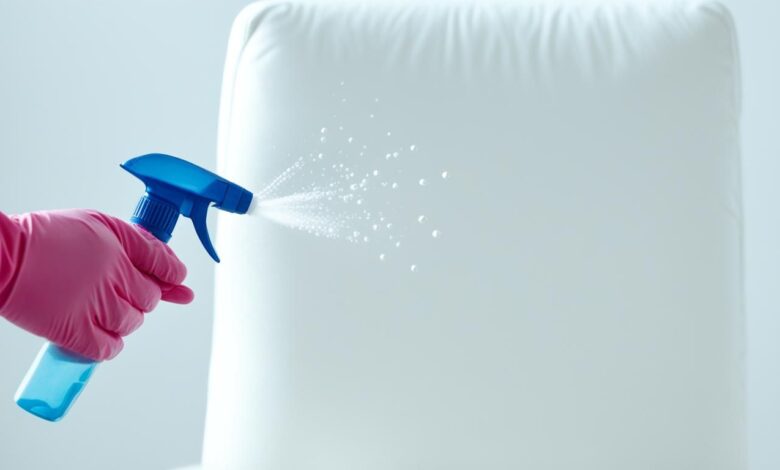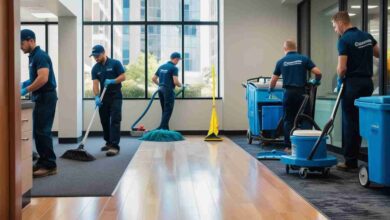
Furniture is an integral part of any home, bringing comfort, functionality, and style to each room. However, with regular use, sofas, chairs, and other upholstered items can accumulate dirt, dust, and stains, which can diminish their beauty and longevity. Upholstery cleaners play a key role in maintaining your furniture, ensuring it remains clean, inviting, and in top condition. This essay will discuss the importance of upholstery cleaning, different cleaning methods, types of upholstery cleaners available, and essential tips for preserving the beauty and functionality of your furniture.
The Importance of Upholstery Cleaning
Upholstery is exposed to a lot of wear and tear daily. Dust, pet hair, food crumbs, spills, and body oils can build up over time, creating an ideal environment for bacteria, allergens, and even mold. Regularly cleaning upholstery not only improves the appearance of furniture but also prolongs its life and contributes to a healthier indoor environment. Upholstery cleaning helps in:
- Maintaining Appearance: Regular cleaning keeps the furniture looking fresh and vibrant, preserving the colors and textures that make your furniture stand out.
- Improving Indoor Air Quality: Upholstery fibers can trap dust, allergens, and bacteria. Cleaning helps remove these pollutants, reducing allergens and creating a healthier living space.
- Prolonging Furniture Life: Dirt and grime can wear down fabric fibers, leading to fraying and weakening. Regular cleaning protects the upholstery, ensuring it lasts longer.
- Preventing Odors: Accumulated dirt, pet dander, and spills can lead to unpleasant odors in the fabric. Regular cleaning prevents odors from setting in, keeping your furniture smelling fresh.
Types of Upholstery Cleaning Methods
Upholstery cleaning isn’t a one-size-fits-all approach. Different fabrics require different cleaning methods to ensure they are treated safely and effectively. Here are some common cleaning methods for upholstery:
1. Vacuuming
Vacuuming is the most basic yet essential step in upholstery cleaning. A good vacuum can remove loose dirt, dust, pet hair, and allergens from fabric surfaces. Upholstery attachments on vacuums are specifically designed to reach crevices and tight spaces. Regular vacuuming not only keeps the fabric clean but also prevents dirt from becoming embedded in the fibers.
2. Spot Cleaning
Accidents happen, and spot cleaning is essential for tackling spills and stains as soon as they occur. A gentle cleaner or solution, applied immediately, can prevent stains from settling into the fabric. Spot cleaning products are formulated for various materials, so it’s important to choose one compatible with your upholstery type.
3. Steam Cleaning
Steam cleaning is highly effective for deep cleaning. It uses hot steam to penetrate fabric fibers, lifting dirt, bacteria, and allergens. Steam cleaning machines typically have attachments specifically for upholstery, allowing deep cleaning without soaking the fabric. However, steam cleaning may not be suitable for all fabrics, especially delicate materials like silk or wool, as the heat can damage them.
4. Dry Cleaning
Dry cleaning is a method that uses little to no water, making it ideal for sensitive fabrics that can’t withstand moisture. Dry-cleaning solvents and foams lift dirt from upholstery without the need for excessive scrubbing or soaking. Many professional cleaning companies offer dry-cleaning services, and there are DIY dry-cleaning kits available.
5. Shampooing
Shampooing involves applying a specially formulated upholstery shampoo to clean the fabric. It’s commonly used for synthetic and more durable materials that can handle moisture. After applying shampoo, it’s usually brushed in, allowed to sit, and then vacuumed out once it has dried. This method works well for thorough, occasional cleanings.
Types of Upholstery Cleaners
Choosing the right upholstery cleaner can make a significant difference in achieving effective results without damaging your furniture. Here are some popular types of upholstery cleaners:
1. Foam Cleaners
Foam cleaners are ideal for upholstery because they don’t saturate the fabric. You simply spray the foam on the fabric, allow it to penetrate, and then blot it away. Foam cleaners are available for both general use and specific stain removal.
2. Spray Cleaners
Spray cleaners are convenient for spot cleaning and small stains. They are typically formulated to target specific types of stains, such as food, pet accidents, or grease. Some sprays are multipurpose, while others are specialized, so it’s important to read labels to ensure compatibility with your upholstery.
3. Enzyme Cleaners
Enzyme cleaners are popular for their ability to break down organic stains, making them effective for pet accidents and food spills. These cleaners contain natural enzymes that neutralize odors and lift stains, and they’re generally safe for most fabric types.
4. Dry Cleaning Solvents
Dry cleaning solvents are typically used for delicate fabrics that shouldn’t be exposed to moisture. They dissolve dirt without saturating the material. Because of their strong formula, these cleaners are best applied by professionals or used with caution.
5. Homemade Solutions
For those who prefer a DIY approach, homemade cleaners like a mixture of vinegar and water, or baking soda and water, can be effective. These solutions are safe and eco-friendly, but it’s essential to test them on an inconspicuous area first to ensure they won’t damage the fabric.
Essential Tips for Upholstery Maintenance
Beyond regular cleaning, following these tips will help keep your furniture looking its best and prolong its lifespan:
1. Read the Care Labels
Each piece of furniture typically comes with a care label indicating the recommended cleaning methods and products. The label may contain symbols or codes that refer to cleaning instructions, such as:
- W: Water-based cleaners can be used.
- S: Only solvent-based cleaners should be used.
- WS: Both water and solvent-based cleaners are safe.
- X: Only vacuuming or light brushing is recommended; avoid any liquids or cleaning solutions.
2. Test Cleaning Products First
It’s crucial to test any new cleaning product in an inconspicuous area before applying it to the entire surface. This helps ensure that the cleaner won’t cause discoloration or damage to the fabric.
3. Avoid Over-Wetting
For water-based cleaning methods, avoid saturating the fabric. Excess water can penetrate the upholstery and reach the cushions, leading to mildew, odors, and water stains. Using minimal water or a damp cloth helps prevent these issues.
4. Rotate and Flip Cushions
Rotating and flipping cushions regularly can prevent uneven wear and help them maintain their shape. This is especially useful for high-traffic areas and helps extend the lifespan of your upholstery.
5. Use Slipcovers
Slipcovers are a simple yet effective way to protect upholstery from spills, stains, and everyday wear. They are especially useful in homes with children and pets, as they can be easily removed and washed.
6. Keep Away from Direct Sunlight
Prolonged exposure to sunlight can cause fabrics to fade and deteriorate over time. To preserve the color and integrity of your upholstery, avoid placing furniture in direct sunlight, or use curtains and blinds to block UV rays during peak hours.
DIY Upholstery Cleaning Tips
For those interested in a DIY approach, there are various safe and effective methods to clean upholstery using household ingredients:
- Baking Soda: Baking soda is a natural deodorizer that can be sprinkled on upholstery to remove odors. Let it sit for about 15-20 minutes, then vacuum it off.
- Vinegar Solution: A mixture of equal parts white vinegar and water can be used to tackle stains and freshen up fabric. Use a cloth to apply the solution to the stain and blot gently. Vinegar has natural deodorizing properties as well.
- Hydrogen Peroxide: Hydrogen peroxide is effective for removing stains but should be used cautiously as it can bleach some fabrics. It’s especially useful for light-colored or synthetic fabrics.
Hiring Professional Upholstery Cleaners
For deep cleaning or tackling difficult stains, hiring a professional upholstery cleaning service can be a worthwhile investment. Professionals have specialized equipment and knowledge of different fabric types, ensuring a thorough and safe cleaning process. Professional cleaning may be especially beneficial for delicate or valuable furniture that requires careful handling.
Conclusion
Upholstery cleaning is essential for keeping furniture fresh, clean, and in good condition. By understanding the different types of upholstery cleaners and cleaning methods, you can make informed choices that help maintain the beauty and functionality of your furniture. Whether you opt for DIY solutions or professional services, regular cleaning and maintenance ensure your furniture remains a comfortable and stylish part of your home for years to come.




